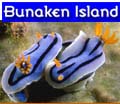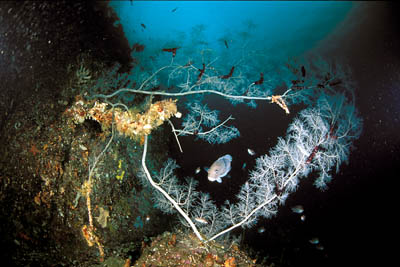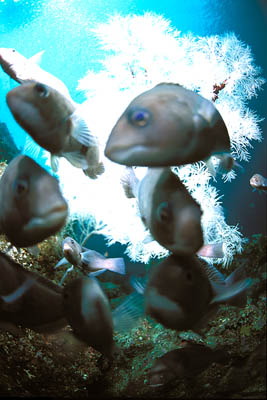
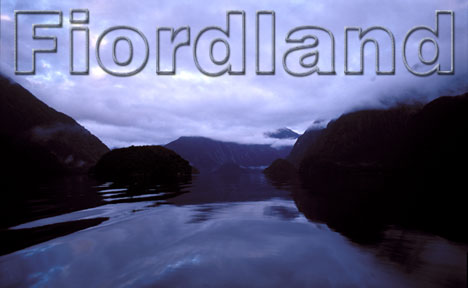
Tucked
away in the remote south western corner of New Zealand's South Island
is the country's largest area of wilderness.
This
is Fiordland - wild and rugged, dark and mysterious - a land shrouded
in mist and full of beauty.
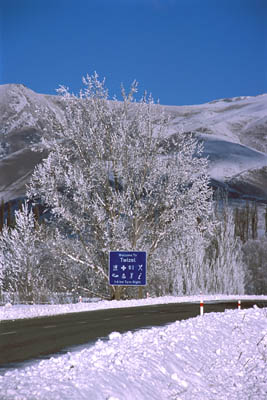 |
New Zealand divers in search of a dive holiday destination often head for the tropics in winter to escape the cold and damp of home. Few head for the deepest south but those that brave the harsh conditions can expect to find Fiordland at its best.
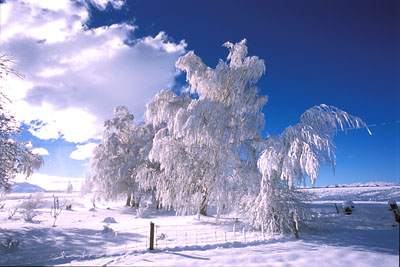 |
Traveling from the north to the deep south is most conveniently accomplished by flying but as divers with a mountain of equipment, we elected to drive the 1600 odd kilometres and experience some of the South Island's beautiful landscapes along the way.
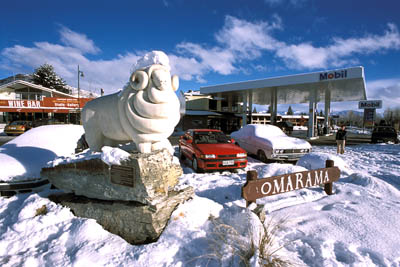 |
Our departure in late June 2002 was at the tail end of a ferocious weather bomb which had hit the north of the country. After traveling down through a water logged North Island we crossed the Cook Strait and continued our long drive down through the South Island.
On departing Christchurch, drifts of snow began to appear beside the road and steadily increased in size until the landscape was completely blanketed in white. Tekapo, Twizel and Omarama offered beautiful snow covered panoramas before the weather started to deteriorate as we traveled further south.
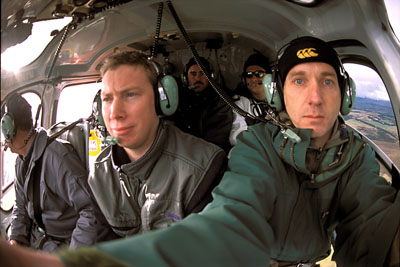 |
By
the time we reached Te Anau we were exhausted after 29 hours of travel
but full of anticipation of flight into Dusky Sound the following
morning.
We
had waited in Te Anau for most of the morning for the flight and in
that time had watched the weather regularly cycle between heavy rain
and feeble patchy sunshine.
These conditions were obviously nothing unusual and it seemed inevitable that we would experience some less than perfect conditions during what would be a fairly brief 24 minute chopper flight.
After dragging the helicopter out of its hanger, we soon departed the field near Te Anau and rose above the rural Southland landscape.
For me, the hissing squeal of the turbine and thumping of the rotor were not something I had experienced so intimately before. Not usually a big fan of flying, this journey through spectacular landscapes and weather was an exhilarating experience.
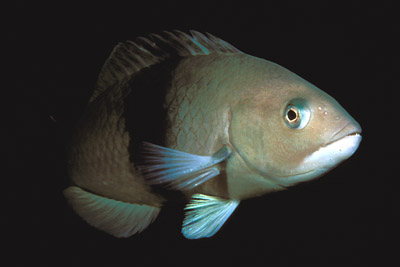 |
Being strapped in close to a powerful engine whilst being buffeted about by wind, rain, sleet and snow created a feeling of invincibility and left me buzzing as we first crossed Lake Manapouri and then began to climb up one of the many snow covered alpine valleys.
As the visibility worsened it seemed like there might be no way through the increasingly dense cloud. Inching our way further up an alpine valley now surrounded by cloud and show, the chopper's rotor tips barely seemed to clear the snow beneath. When a saddle finally appeared from out of the mist, we sneaked through and immediately began a rapid descent down into the Seaforth River valley.
Before long, we were approaching Supper Cove at the top of Dusky Sound where our home for the the next week, Sandpiper, was sitting at anchor awaiting our arrival.
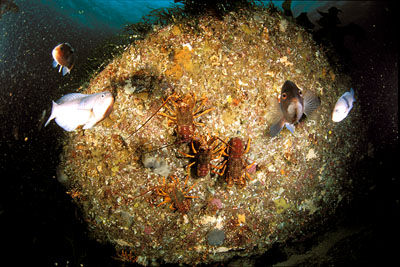 |
Our first dive in Dusky Sound that afternoon was in miserable conditions with strong wind, rain and hail. My hands were starting to feel numb before I even got in the water and only got worse in the icy cold fresh water or low salinity layer that is typically found on the surface of Fiordland's sounds. After descending however, things warmed a little to a consistent 11°C sea water temperature and my hands actually started to feel a little more comfortable.
Down
below the fresh water layer, a somewhat gloomy seascape was revealed
in
conditions of good visibility but very low ambient light levels.
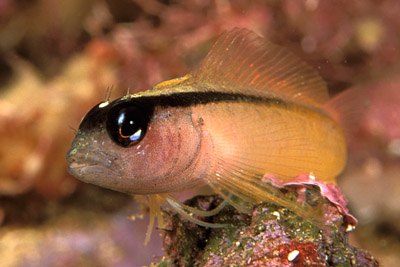 |
Fiordland
is a cool place to the amateur marine biologist in me because there's
a lot of creatures which are familiar to me from northern waters but
also plenty of new stuff.
I found several cool new fish - stargazers, telescope fish and spiny
dogfish, but for me, the fish which stood out most of all was the
girdled wrasse (Notolabrus cinctus). These guys aren't prominent
in northern waters but in Fiordland, they're very much in your face
on nearly every dive. When stopping to take a photo, the mob of wrasses
that had been following me would tend to creep in closer and closer
until - OUCH! One of the little ****ers would give my finger a powerful
nip.
While shooting photos with the wide angle dome port on my camera housing, the wrasses would swarm around me, fascinated by their reflection in the dome port.
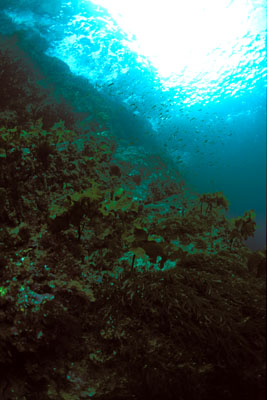 |
On two dives we saw the odd looking stargazer. One of these weird fish was sitting out in the open but the other one was so well camouflaged that it was a bit of a miracle that I spotted it buried amongst the rubble of the reef. As I moved in close to take photos, I half expected him to snap at the camera as he would have a small fish innocently passing by. Instead, his bulbous eyes rotated curiously as I I zapped him time and time again with the camera's strobes.
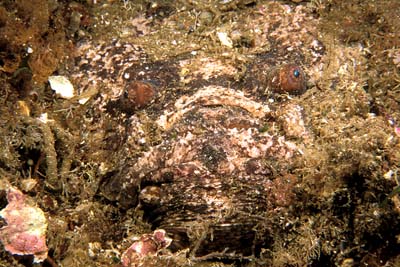 |
Some
of the fish familiar to me from north eastern New Zealand seem to
behave a little differently in Fiordland. The yellow-black triplefin
is normally hard to approach closely with my big ugly camera but they
seem to be lot more willing to hang around for snaps in Fiordland.
Oblique-swimming triplefins form shimmering schools far bigger than
I'd seen before and create a scene somewhat reminiscent of a tropical
reef.
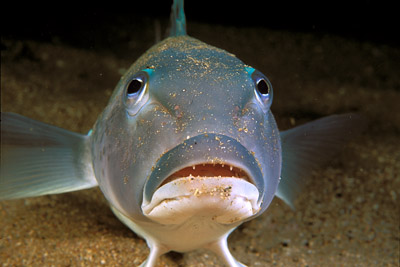 |
Yup,
there's more! Click here for the second
part of the Fiordland story.
© 2002 ianskipworth.com
